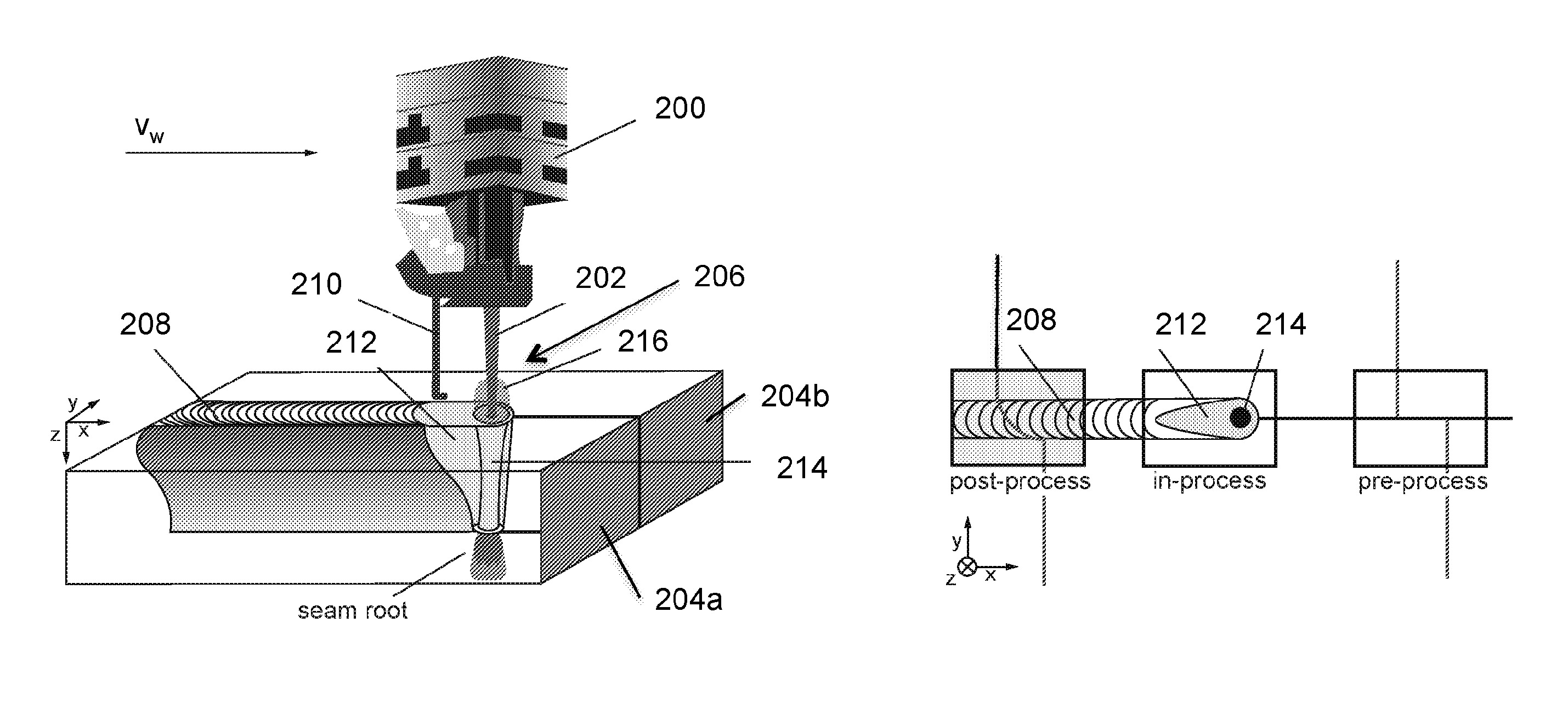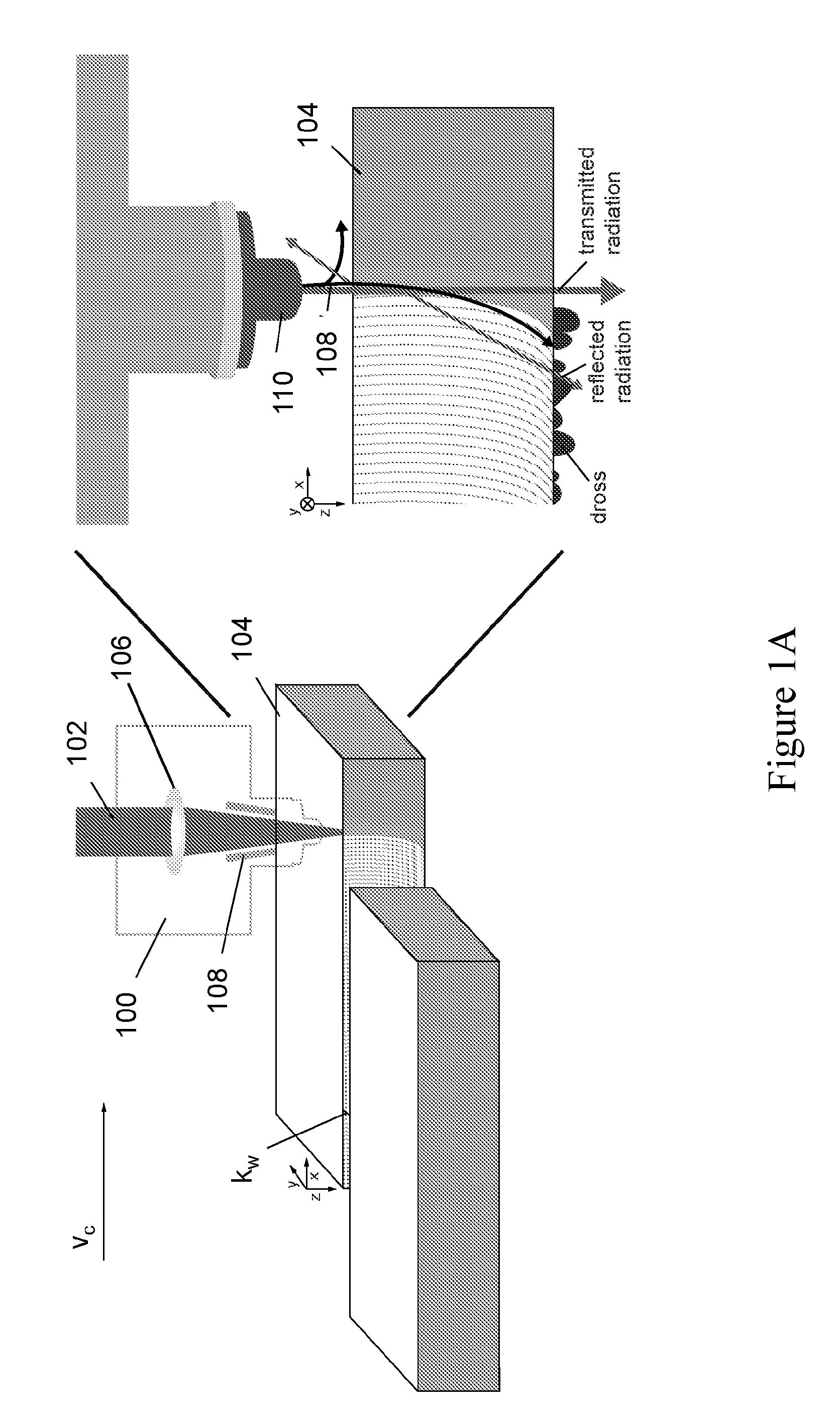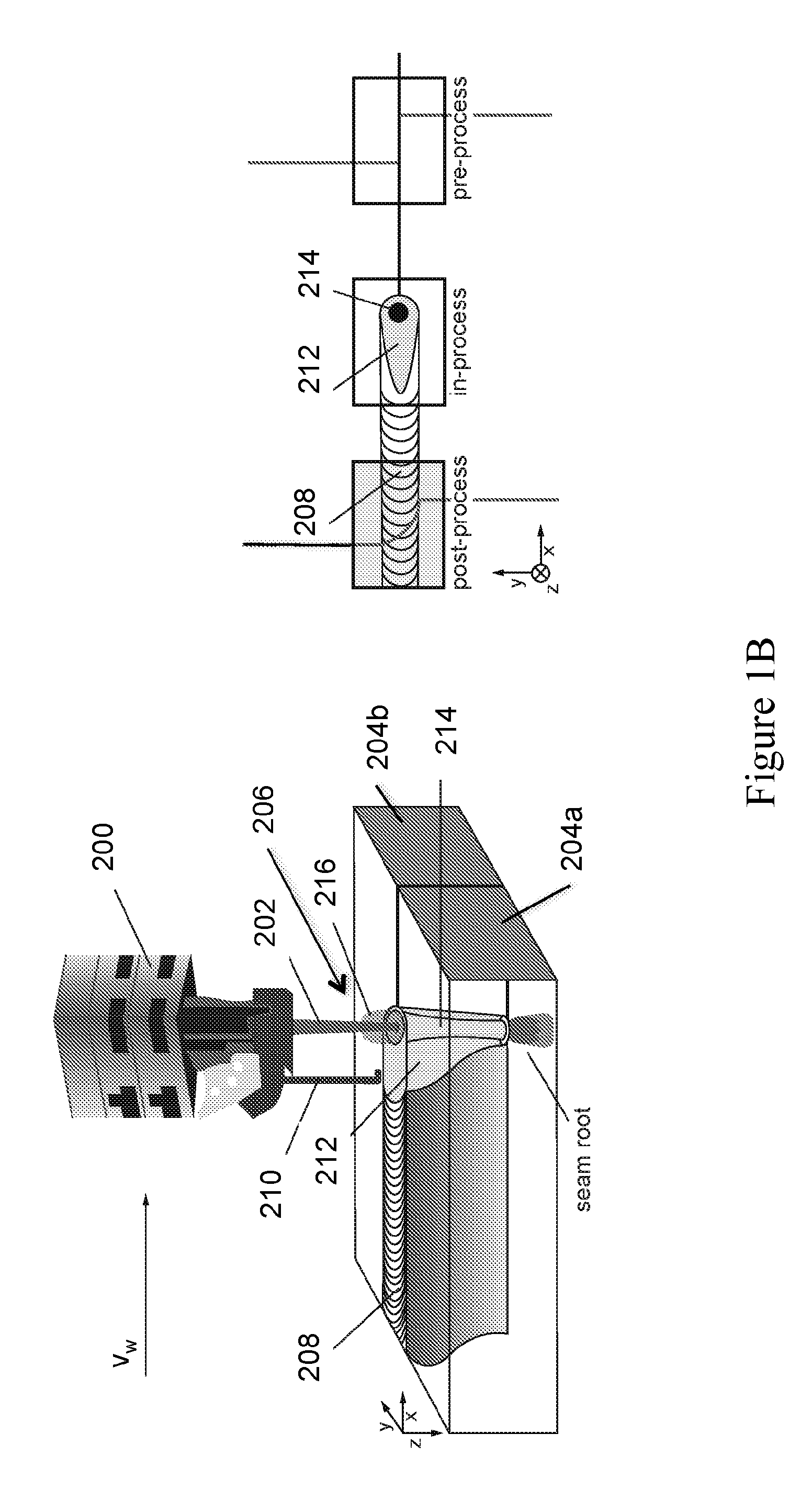Method for closed-loop controlling a laser processing operation and laser material processing head using the same
a closed-loop control and laser processing technology, applied in the field of methods, can solve the problems of high cost, large effort and high cost, and many of these cannot be transferred to real manufacturing situations, so as to increase the flexibility, quality and efficiency of the production system, and maintain the effect of quality
- Summary
- Abstract
- Description
- Claims
- Application Information
AI Technical Summary
Benefits of technology
Problems solved by technology
Method used
Image
Examples
first embodiment
[0157]In the following, the present invention regarding monitoring gaps with a lack of fusion in laser welding should be described.
[0158]Current industrial solutions may successfully monitor many defects that occur during joining processes. However, detecting insufficient connection or a lack of fusion because of gaps between two sheets is challenging. This defect often occurs if the gap between the two sheets is too large. Even if the laser beam penetrates through the top and bottom layers of the two sheets, the gap may still be too large for a successful joint, and a complete lack of fusion or false friend can occur. Because the beam has penetrated the top and bottom sheets, the defect is often not visible when inspecting the workpiece after processing.
[0159]Car manufacturers increasingly integrate zinc-coated alloys. When welding zinc-coated workpieces, it is advantageous to leave a specific gap between the two work-pieces which will be joined. This gap allows any zinc vapor to d...
second embodiment
[0173]In the following, the present invention regarding agent control of laser cutting should be described.
[0174]The agent of a second embodiment of the present invention requires at least one training workpiece with some laser power variation, in this case from 1,500 W to 50 W. The training workpiece is processed at 3.0 m / min, as shown in FIG. 8. A human expert teaches the cutting control agent to keep the cutting kerf stable at 0.4 mm by indicating the corresponding region on the training workpiece. The kerf width varies during cutting with alterations in laser power or processing velocity. Once the agent has trained itself, it will test its cognitive capabilities by processing at different velocity levels. Furthermore, the agent has to transfer the learned knowledge to unknown situations, such as processing different materials or layers of multiple sheets.
[0175]The cutting control agent of the present invention applied throughout all the experiments has trained itself with a stai...
third embodiment
[0183]In the following, a third embodiment related to agent control of laser welding will be described.
[0184]It is a common aim in industrial welding to join two parts with maximal connection, yet to avoid excessive penetration without any weld root convexity or concavity on the obscured side of the workpiece surface. A root convexity or concavity occurs when the laser beam actually exits the workpiece on the bottom side, also known as full penetration weld. This leaves a noticeable convex or concave trace, which restricts a following paint job because the weld seam root would still be evident. As another manufacturing example, with pipe welding this type of imperfection may cause undesired behavior in the fluid flow that can cause erosion or corrosion issues. If the laser power could be controlled in terms of the penetration depth, it may be maintained at the desired level, thus creating maximal connection without the beam leaving the workpiece. Due to the nonlinearity of the weldi...
PUM
| Property | Measurement | Unit |
|---|---|---|
| thicknesses | aaaaa | aaaaa |
| processing time | aaaaa | aaaaa |
| processing time | aaaaa | aaaaa |
Abstract
Description
Claims
Application Information
 Login to View More
Login to View More - R&D
- Intellectual Property
- Life Sciences
- Materials
- Tech Scout
- Unparalleled Data Quality
- Higher Quality Content
- 60% Fewer Hallucinations
Browse by: Latest US Patents, China's latest patents, Technical Efficacy Thesaurus, Application Domain, Technology Topic, Popular Technical Reports.
© 2025 PatSnap. All rights reserved.Legal|Privacy policy|Modern Slavery Act Transparency Statement|Sitemap|About US| Contact US: help@patsnap.com



